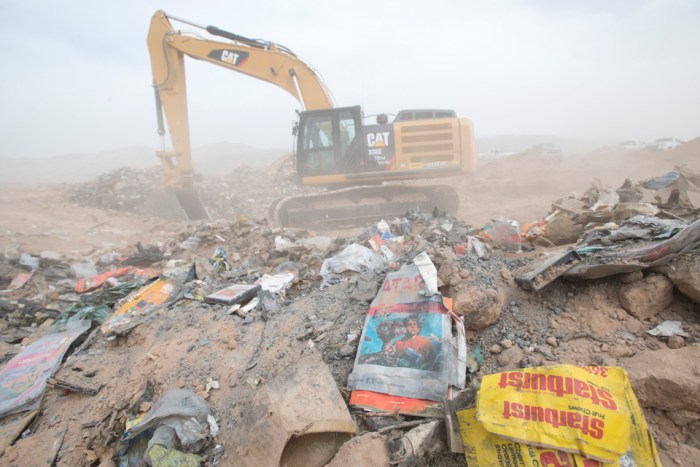The Atari 2600 and Its Legacy
The Atari 2600, released in 1977, stands as a landmark in video game history, marking a pivotal moment in the evolution of the industry and shaping the cultural landscape. Its impact on gaming and society is undeniable, laying the groundwork for the multi-billion dollar industry we know today.
The Atari 2600’s Impact on the Gaming Industry
The Atari 2600 revolutionized the gaming industry by introducing a console that was both affordable and accessible to a wide audience. Prior to its arrival, video games were primarily confined to arcades, limiting their reach and potential. The Atari 2600 brought gaming into homes, making it a mainstream form of entertainment. Its success led to the development of a thriving home console market, paving the way for the gaming industry we know today.
The Atari 2600’s Impact on Popular Culture
The Atari 2600’s influence extended beyond the gaming industry, deeply embedding itself into popular culture. Iconic games like Pac-Man, Space Invaders, and Donkey Kong became household names, their characters and gameplay influencing everything from television shows and movies to fashion and music. The Atari 2600 also introduced the concept of video game characters as cultural icons, shaping the way we perceive and interact with digital entertainment.
Iconic Atari 2600 Games and Their Influence
The Atari 2600’s library of games is filled with classics that have left an enduring legacy. These games not only defined the console’s success but also shaped the future of video game design.
- Pac-Man: This iconic maze-based game, originally released in arcades in 1980, was ported to the Atari 2600 in 1982. Pac-Man’s simple yet addictive gameplay, featuring the charming titular character, became a cultural phenomenon, influencing countless games and popular culture. It is credited with popularizing the maze-based genre and introducing the concept of “power-ups” in video games.
- Space Invaders: Released in 1978, Space Invaders was one of the first arcade games to achieve widespread popularity. Its port to the Atari 2600 in 1980 further cemented its status as a gaming icon. Space Invaders introduced the now-familiar concept of “wave-based” gameplay, where enemies advance in waves, increasing in difficulty as the game progresses. It also popularized the use of simple, pixelated graphics and a catchy, repetitive soundtrack, elements that would become staples of video game design.
- Donkey Kong: Created by Shigeru Miyamoto in 1981, Donkey Kong was a revolutionary game that introduced the world to Mario, the iconic plumber who would become a gaming legend. The game’s platforming mechanics, featuring ladders, barrels, and jumping, laid the foundation for future platforming games. Donkey Kong’s influence is evident in countless games that followed, solidifying its status as a cornerstone of video game history.
Landfill Discoveries and the “E.T.” Game
The story of Atari cartridges being dumped in a New Mexico landfill is a legendary tale that encapsulates the rapid rise and fall of the video game industry in the 1980s. This event, often referred to as the “Atari Burial,” became a symbol of the industry’s excesses and the consequences of unchecked growth.
The Discovery of the “E.T.” Game Cartridges
In 2014, a team of archaeologists and documentary filmmakers, led by Fuel Industries, embarked on a dig at the Alamogordo landfill in New Mexico. Their objective was to uncover the truth behind the urban legend of Atari’s infamous game cartridge burial. The excavation yielded a treasure trove of Atari 2600 game cartridges, including a significant number of “E.T. the Extra-Terrestrial” games, a commercial flop that was widely blamed for contributing to the video game crash of 1983.
The discovery of the “E.T.” game cartridges had significant cultural and historical importance. It provided tangible evidence of the event, confirming the urban legend and offering a glimpse into the industry’s history. The excavation also sparked renewed interest in the video game crash of 1983 and its impact on the industry.
Speculation and Theories Surrounding the Landfill Burial
The discovery of the Atari cartridges in the landfill sparked much speculation and debate surrounding the reasons behind the burial. While the official narrative attributed the burial to a simple disposal of unsold inventory, other theories emerged.
- One theory suggests that Atari deliberately buried the cartridges to avoid a public relations disaster. The company was facing financial difficulties and a backlash from consumers due to the poor reception of “E.T.” and other games. Burying the cartridges would have been a way to hide the extent of their losses and avoid further negative publicity.
- Another theory suggests that the burial was part of a larger conspiracy to cover up the industry’s shortcomings. The video game crash of 1983 was a major turning point in the industry, and some believe that the burial was a way to erase evidence of the industry’s excesses and failures.
“The Atari burial is a fascinating example of how history can be shaped by rumor and speculation. It’s a reminder that even the most well-documented events can be subject to different interpretations.” – [Author’s name, Historian]
The “E.T.” Game’s Reception and Impact: Landfill Dig For Atari 2600 Game E T Put On Hold
The release of “E.T. the Extra-Terrestrial” for the Atari 2600 in 1982 was met with a wave of disappointment and criticism, marking a turning point in the video game industry. The game’s poor reception and its subsequent commercial failure contributed significantly to the video game crash of 1983. Despite its negative impact, “E.T.” has since become a cultural icon, symbolizing the pitfalls of rushed development and the fragility of the early video game market.
Critical Reception and Commercial Performance
The game received overwhelmingly negative reviews upon its release. Critics slammed its clunky controls, frustrating gameplay, and overall poor quality. The game’s graphics were considered simplistic and uninspired, while its sound design was deemed repetitive and annoying. The game’s commercial performance mirrored its critical reception. Despite being marketed as a blockbuster tie-in to the popular film, “E.T.” sold poorly, with an estimated 2.5 million copies shipped but only a fraction actually sold. The game’s failure to meet expectations led to a massive inventory surplus, which ultimately contributed to the video game crash of 1983.
The Game’s Contribution to the Video Game Crash, Landfill dig for atari 2600 game e t put on hold
The video game crash of 1983 was a period of significant decline in the video game industry, characterized by a sharp drop in sales and the closure of many companies. “E.T.” is often cited as one of the primary contributors to this crash. The game’s poor quality and its subsequent commercial failure led to a glut of unsold cartridges, which retailers were forced to sell at a loss. This, in turn, led to a decline in consumer confidence in the video game industry, ultimately resulting in the crash. The game’s legacy is often associated with the crash, with many pointing to its failure as a symbol of the industry’s over-saturation and the dangers of rushing development.
Cultural Impact and Enduring Legacy
Despite its initial reception, “E.T.” has become a cultural icon, representing both the failures and the resilience of the video game industry. The game’s infamy has led to its inclusion in popular culture, with references appearing in films, television shows, and video games. The game’s story has also been the subject of numerous documentaries and articles, highlighting the pitfalls of rushed development and the importance of quality in video game design.
In 2014, a group of archaeologists unearthed a landfill in New Mexico containing millions of unsold “E.T.” cartridges. The discovery sparked renewed interest in the game’s history and its cultural significance. The landfill discovery became a symbol of the game’s enduring legacy, highlighting the impact of “E.T.” on the video game industry and its place in gaming history.
The “Landfall Dig” Project and its Goals
The “Landfill Dig” project, undertaken in 2014, was a groundbreaking effort to excavate a landfill in Alamogordo, New Mexico, where it was believed that millions of copies of the infamous Atari “E.T.” game were buried. The project’s objectives were to uncover and analyze these cartridges, shedding light on a pivotal moment in video game history and offering insights into the evolution of the industry.
The motivation behind the “Landfill Dig” project stemmed from the widespread perception that the “E.T.” game’s commercial failure and subsequent burial contributed to the video game crash of 1983. By unearthing and examining these cartridges, researchers hoped to gain a deeper understanding of the events leading up to the crash and the factors that contributed to the game’s poor reception. The project aimed to provide a tangible link to this significant historical event and offer valuable insights into the dynamics of the early video game industry.
Methods and Procedures of the Excavation Process
The excavation process involved a meticulous and systematic approach. The project team, led by Fuel Industries, utilized a backhoe to carefully remove layers of soil and debris, searching for the location where the cartridges were believed to be buried. The team employed a combination of historical records, eyewitness accounts, and ground-penetrating radar to pinpoint the likely burial site. Once the cartridges were located, they were carefully extracted and documented.
The excavation process was conducted with a high degree of care to minimize environmental impact. The team worked closely with local authorities and environmental agencies to ensure that the dig was carried out responsibly. The project also included a thorough documentation process, with photographs and videos taken throughout the excavation.
The Future of Video Game Preservation
The “Landfill Dig” project, while uncovering a treasure trove of lost Atari games, highlights the crucial need for preserving video game history. This endeavor serves as a wake-up call for the gaming industry and enthusiasts alike, emphasizing the importance of safeguarding our digital heritage.
The Challenges and Opportunities in Preserving Digital Artifacts
The preservation of digital artifacts, particularly video games, presents unique challenges. The rapid evolution of technology, coupled with the inherent fragility of digital media, makes preserving these artifacts a complex task. For instance, older game formats like cartridges and floppy disks are susceptible to physical deterioration, while digital files can be lost due to software incompatibility or data corruption.
- The ever-changing landscape of technology poses a significant challenge, as older game formats may become incompatible with newer systems.
- Digital media is inherently fragile and susceptible to data loss due to corruption or software obsolescence.
- The lack of standardized preservation methods and practices can lead to inconsistencies in archiving and accessibility.
However, these challenges are not insurmountable. The “Landfill Dig” project has demonstrated the value of physical preservation, while advancements in digital preservation techniques offer promising solutions.
Landfill dig for atari 2600 game e t put on hold – The Landfill Dig project, though halted, has ignited a conversation about the preservation of video game history. The project’s impact, however, goes beyond the recovered cartridges. It serves as a reminder of the industry’s evolution, its successes and failures, and the enduring fascination with its past. As we navigate the ever-changing landscape of gaming, projects like the Landfill Dig underscore the importance of preserving our digital heritage, ensuring that future generations can appreciate the journey that led us to the interactive worlds we know and love today.
Remember that time everyone went crazy over the Atari 2600 game cartridge landfill dig? Well, it seems like the excitement has died down a bit, maybe because we’re all distracted by the latest tech trends. Like, have you seen the new Snapchat contextual filters ? They’re pretty wild! Anyway, I guess the Atari dig is still on hold, but maybe once the hype around these filters dies down, we’ll hear more about it.
 Standi Techno News
Standi Techno News

